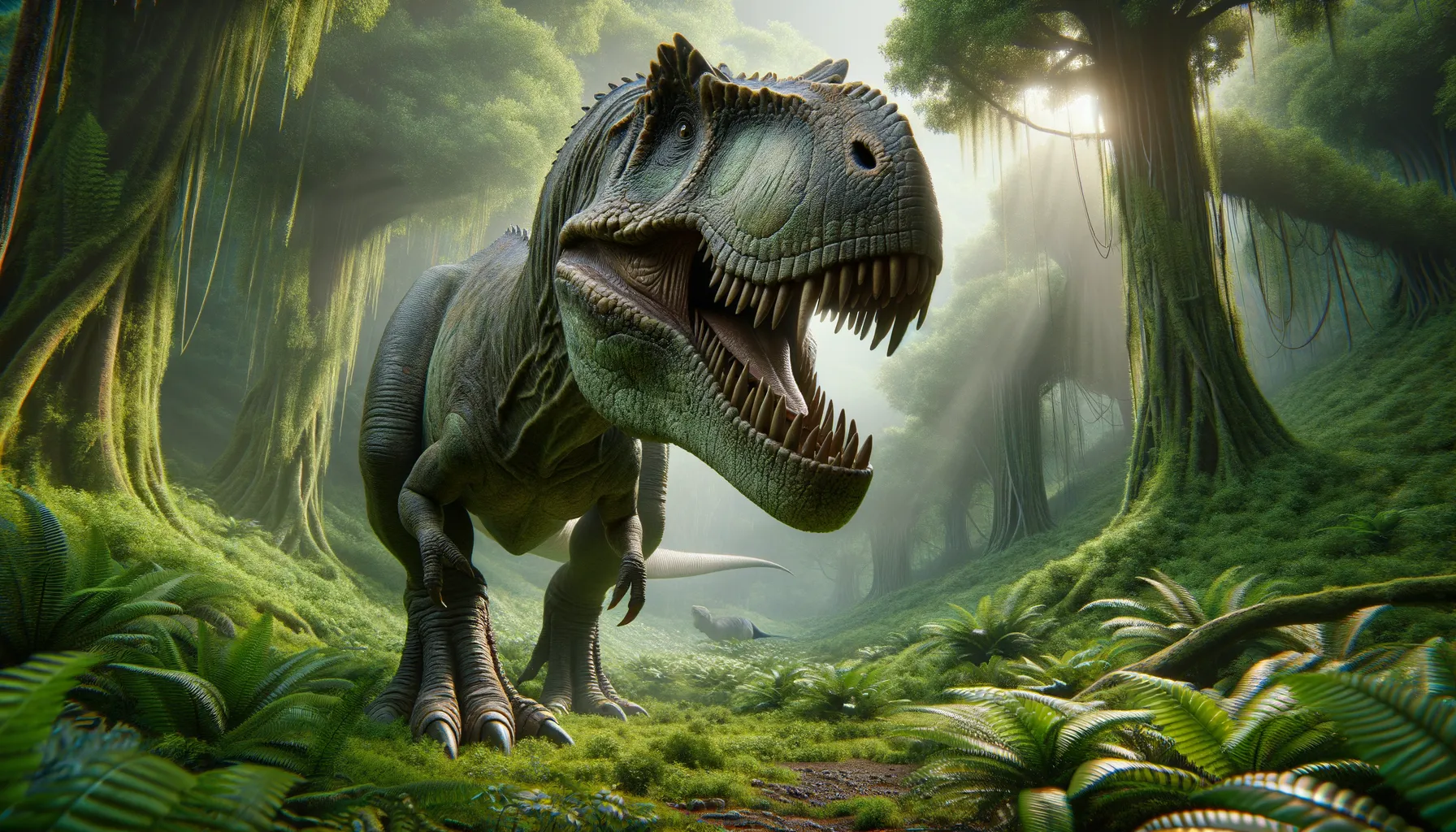
Macrodontophion
A giant with colossal teeth and great strength.
Period
Cretaceous
Length
Measured around 10 meters in length.
Height
Stood about 3 meters tall.
Weight
Approximately 1,000 kilograms.
Macrodontophion was a fascinating creature from the Cretaceous period, characterized by its distinctively large teeth and robust body. It lived in what we now know as Asia, primarily within lush, forested environments. This dinosaur had adapted to a life of steady movement across its habitat, using its impressive size and formidable dentition to dominate its ecological niche.
Diet
Macrodontophion was primarily a carnivore. Its large teeth were well-suited for tearing through the flesh of its prey. Occasionally, it may have scavenged the remains of other animals to supplement its diet.
Hunting
This dinosaur was a solitary predator that relied on surprise to catch its prey. It ambushed smaller dinosaurs, using its powerful jaws to seize and subdue them. The cold-blooded nature of Macrodontophion meant it needed less food than warm-blooded species, allowing it to endure longer periods between successful hunts.
Environmental challenges
Macrodontophion faced challenges from shifting climates and changing vegetation patterns during the Cretaceous. The competition for resources among large predators posed a constant threat. Natural events such as wildfires or floods occasionally disrupted its habitat, forcing migration or adaptation. Unlike smaller, more agile species, it struggled with rapid changes, especially in severe weather.
Speed
This dinosaur moved slowly in short bursts.
Lifespan
Estimated to live about 30 to 40 years.
First discovery
Unearthed in the late 20th century in China.
Fun Facts
- Macrodontophion is a dinosaur that is known mostly from fossilized teeth, which gives an intriguing glimpse into its eating habits.
- The name 'Macrodontophion' translates to 'large-toothed snake,' highlighting its distinctive tooth features that resemble those of a reptilian predator.
- Despite its fearsome name, actual physical evidence beyond teeth is sparse, leading to many exciting debates among scientists about its true nature.
- Macrodontophion lived during the Mesozoic era, a time when dinosaurs were the dominant creatures on Earth.
- The discovery of Macrodontophion's teeth in Asia has helped paleontologists understand more about the diversity of life in that region during the age of dinosaurs.
- Although not much is known about its full appearance, Macrodontophion continues to fascinate researchers due to its mysterious background.
- By studying Macrodontophion, scientists are able to explore the evolutionary history of early reptiles and their relatives.
Growth and Development
Young Macrodontophions grew slowly, taking several years to reach full size. During this period, their vulnerability to predators was high, necessitating the protection of dense forests or herds of similar species for safety. As they matured, their growth rate reduced, but their size became a crucial defense mechanism. Their strong skeletal structures supported a durable and lengthy lifespan.
Habitat
Macrodontophion thrived in dense forest environments with ample cover and food sources. Its habitat had a diverse range of flora, supporting a myriad of potential prey animals. The area was typically warm, with occasional seasonal variations that brought moisture. This dinosaur enjoyed areas with sufficient water sources, necessary for the sustenance of large animal communities.
Interaction with other species
Macrodontophion primarily interacted with other species as a top predator. Smaller dinosaurs and mammals evaded it to avoid becoming prey. It faced competition with other large carnivores of its time, often leading to territorial disputes. Occasionally, carcass scavengers followed it to benefit from its hunting prowess.
Natural lifespan
In natural circumstances, it could live up to 40 years.
Reproduction
Macrodontophion laid eggs in carefully concealed nests to avoid predators. Males and females likely showed little sexual dimorphism, making them hard to tell apart at a glance. It was suspected they exhibited some parental care, ensuring that at least some hatchlings survived the vulnerable early stages of life. The exact number of eggs laid per clutch is still unknown.
Social behaviour
Generally solitary, Macrodontophion occasionally displayed territorial behavior. Interactions among individuals were rare but could result in skirmishes over food or mates. In certain circumstances, they may have temporarily formed loose groups, particularly during migration or for resource-rich area congregation.
Fossil locations
Fossils of Macrodontophion have primarily been discovered in China. They are occasionally found in sedimentary rock formations indicating forested environments. Some specimens display well-preserved dental features, allowing insight into their diet and behavior. Additional fossil evidence from nearby sites suggests a broad distribution across similar habitats in ancient Asia.
